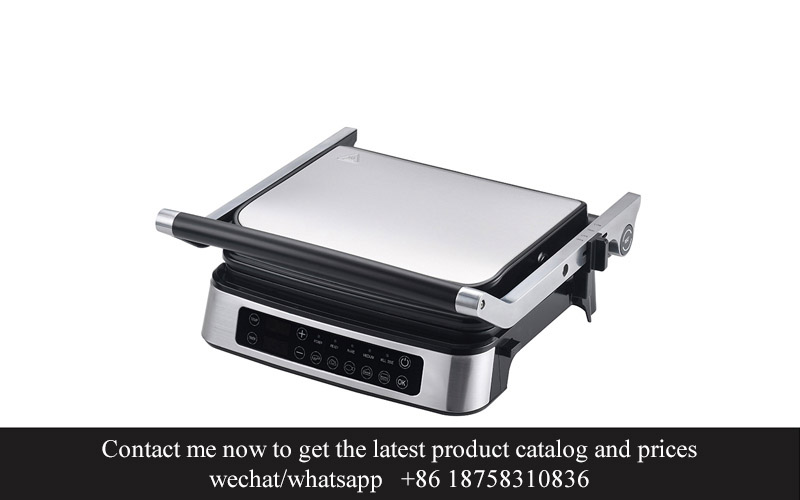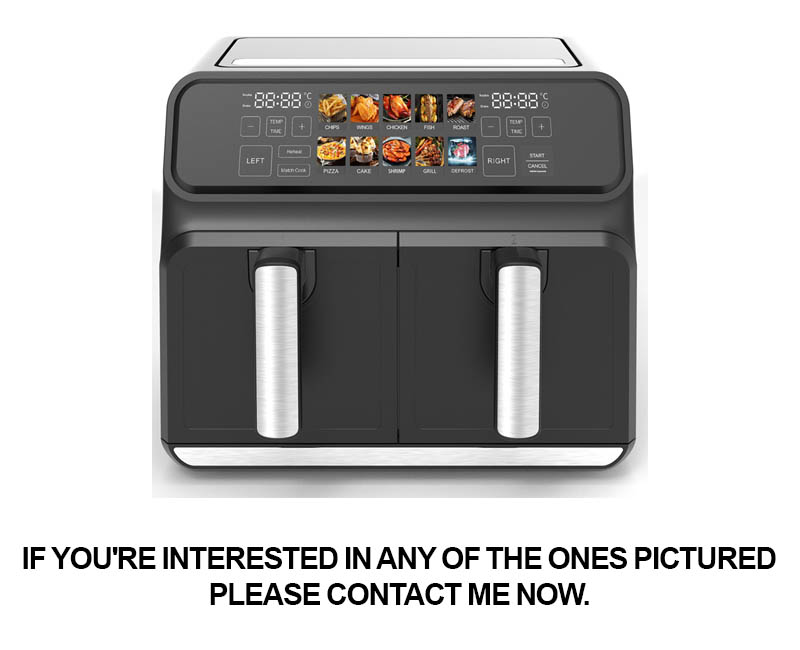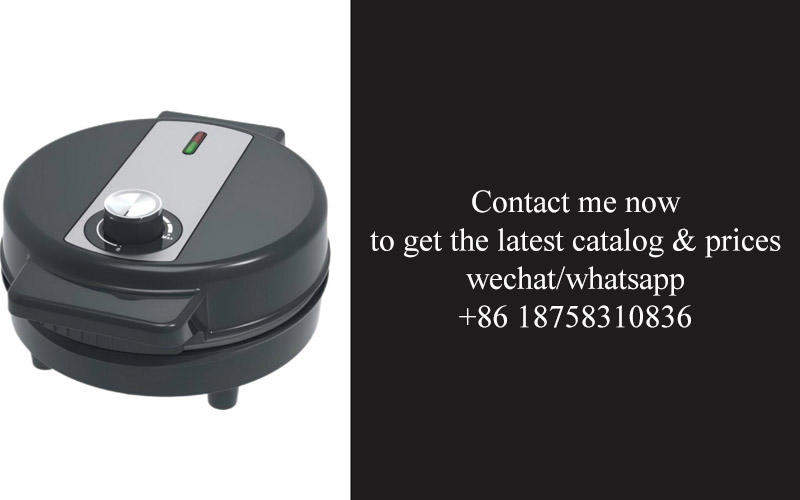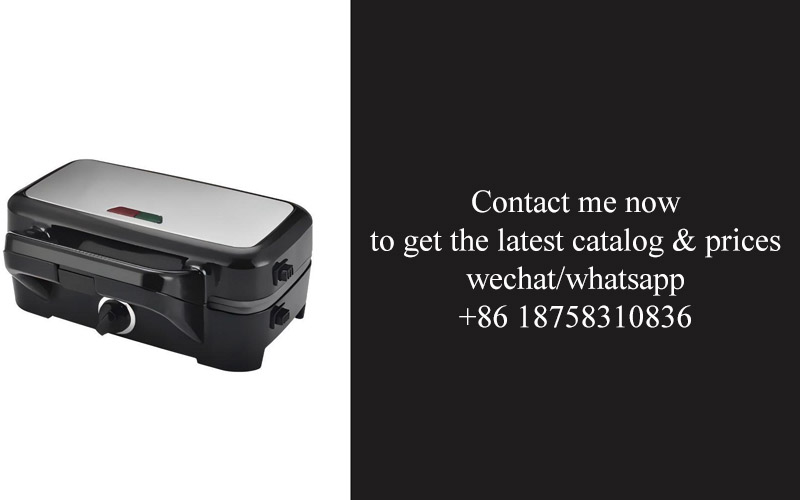Address
304 North Cardinal
St. Dorchester Center, MA 02124
Work Hours
Monday to Friday: 7AM - 7PM
Weekend: 10AM - 5PM
Address
304 North Cardinal
St. Dorchester Center, MA 02124
Work Hours
Monday to Friday: 7AM - 7PM
Weekend: 10AM - 5PM

In the ever-evolving world of kitchen appliances, sandwich plates have emerged as a crucial component, offering both functionality and aesthetic appeal. These innovative plates, crafted through the precision of integrated metal stamping, have become a cornerstone in modern cooking technology. As we delve into the intricacies of sandwich plate design and the advancements brought forth by integrated metal stamping, it becomes clear why these components are not just a part of kitchen appliances but a testament to the industry’s commitment to innovation and quality.
The sandwich plate, a humble yet essential component in modern kitchen appliances, has undergone a fascinating evolution. Once a straightforward metallic plate, it has transformed into a sophisticated piece of engineering that plays a pivotal role in the cooking process. Let’s take a brief journey through the evolution of sandwich plates to appreciate how they have become a cornerstone of culinary innovation.
In the early days, sandwich plates were nothing more than a flat, metal surface designed to evenly distribute heat. They were a simple yet effective solution for cooking a variety of dishes, from pancakes to steaks. The materials used were often limited to cast iron or stainless steel, which were durable but required a certain level of skill and care to maintain.
As technology advanced, so did the design of sandwich plates. The introduction of multi-layered construction marked a significant step forward. These new plates featured an insulating layer between the heating element and the food surface, reducing cooking times and preventing uneven heating. This innovation allowed for more consistent and precise temperatures, which in turn improved the quality of the food being prepared.
The development of non-stick coatings further revolutionized the sandwich plate. No longer did users have to worry about food sticking to the surface or the need for excessive oil. This convenience made cooking more accessible to a broader audience and reduced the cleanup time after use.
The rise of electric cooktops also pushed the evolution of sandwich plates. These cooktops required plates that could withstand higher temperatures and provide efficient heat transfer. As a result, sandwich plates became more specialized, with different designs catering to specific types of cooking. For instance, flat-top grills needed plates with a smooth surface for even searing, while induction cooktops required plates made from materials that could conduct the magnetic field effectively.
In recent years, the focus has shifted towards sustainability and energy efficiency. Sandwich plates have been re-engineered to use less material without compromising durability or performance. This not only reduces the environmental impact but also helps consumers save on energy bills. The use of lightweight metals and advanced coatings has made these plates more responsive to heat changes, leading to quicker cooking times and better food quality.
The integration of smart technology has also become a hallmark of modern sandwich plates. Sensors and controls allow for precise temperature management, enabling users to achieve optimal cooking conditions with ease. Some models even feature Bluetooth connectivity, allowing for remote control and monitoring through a smartphone app.
As we look at the evolution of sandwich plates, it’s clear that they have become more than just a kitchen tool—they are a testament to human ingenuity. From the simple cast iron plate to the sophisticated, smart-enabled sandwich plate of today, each iteration has brought improvements in efficiency, convenience, and culinary outcomes.
The evolution of sandwich plates has also had a significant impact on the broader kitchen appliance industry. Manufacturers are constantly seeking new materials, technologies, and design concepts to enhance the performance and user experience of their products. This continuous innovation ensures that sandwich plates remain at the forefront of kitchen technology, offering new possibilities for both home chefs and professional cooks.
In summary, the journey of the sandwich plate from a basic metal surface to a high-tech kitchen essential is a story of adaptation, innovation, and improvement. As technology continues to advance, it’s exciting to think about what the future holds for this fundamental component in our kitchens.

In the realm of modern kitchen appliances, the role of integrated metal stamping has become indispensable, driving innovation and efficiency. This manufacturing technique has revolutionized the way sandwich plates, a crucial component in various kitchen appliances, are produced.
The precision and consistency of metal stamping make it ideal for creating the intricate patterns and shapes required for sandwich plates. These plates are often found in appliances like toasters, ovens, and even coffee makers, where heat is a fundamental aspect of their function. The ability to stamp out metal plates with exact dimensions and uniform thickness ensures that the heat distribution is optimized, leading to better performance and longevity of the appliance.
The use of integrated metal stamping allows for the creation of sandwich plates with multiple layers, which is essential for appliances that require insulation or heat distribution properties. For example, in toasters, the sandwich plates consist of a heating element in the middle, flanked by conductive and insulating layers. The precision of the stamping process ensures that these layers are perfectly aligned, preventing any heat leakage and enhancing the overall safety of the appliance.
Moreover, the versatility of metal stamping technology enables the production of a wide range of materials for sandwich plates, from stainless steel to aluminum and even specialty alloys. This material diversity opens up new possibilities for designers, allowing them to tailor the thermal properties of the plates to the specific needs of the appliance.
In terms of manufacturing efficiency, integrated metal stamping offers significant advantages. The process is highly automated, reducing labor costs and minimizing the risk of human error. The stamping presses can produce hundreds or even thousands of plates per hour, which is far more efficient than traditional handcrafted methods. This high-speed production not only meets the demand for mass-market appliances but also ensures that each component is uniform, contributing to the reliability of the final product.
Another key aspect of integrated metal stamping is its contribution to the sustainability of kitchen appliances. The efficiency of the manufacturing process, combined with the use of recyclable materials, reduces the environmental impact. This is particularly important as consumers become more environmentally conscious and demand products that are eco-friendly.
Additionally, the design flexibility of metal stamping allows for the integration of features that were previously unattainable. For instance, the creation of complex patterns and channels within the sandwich plates can enhance heat transfer and reduce cooking times. This not only improves the appliance’s performance but also enhances the user experience by providing more consistent and faster results.
In the context of safety, the precision of metal stamping is paramount. The tight tolerances of the stamped parts ensure that the sandwich plates can withstand the intense heat and pressure they will be exposed to without warping or failing. This is critical in preventing accidents and ensuring the safety of the user.
As technology continues to advance, the role of integrated metal stamping in modern kitchen appliances is likely to expand. The industry is witnessing the integration of smart technology, and metal stamping can play a crucial role in the development of smart sandwich plates that can monitor and adjust their heat output for optimal cooking conditions.
In conclusion, integrated metal stamping is not just a manufacturing process; it is a cornerstone of modern kitchen appliance design. It allows for the creation of high-quality, efficient, and safe sandwich plates that are essential for the performance of a wide range of kitchen appliances. As the industry evolves, the role of metal stamping will undoubtedly become even more pivotal in shaping the future of kitchen technology.

In the ever-evolving landscape of kitchen appliances, sandwich plates have emerged as a crucial component, playing a pivotal role in the efficiency and functionality of modern cookware. These plates are not just flat surfaces for cooking; they are the heart of innovative designs that promise better performance and user experience. Here’s a closer look at the latest innovations shaping the future of sandwich plate design.
The integration of advanced materials has revolutionized sandwich plate design. High-grade stainless steel, known for its durability and heat retention, is now being used to create plates that are both robust and efficient. These materials not only enhance the cooking performance but also ensure longevity, making them a favorite among professional chefs and home cooks alike.
One significant innovation is the inclusion of multi-layered construction. Sandwich plates are now designed with multiple layers, each serving a specific purpose. The outer layers are often made of a high-heat-resistant material to withstand intense cooking temperatures, while the inner layers are crafted to distribute heat evenly. This design not only prevents hotspots but also allows for quicker cooking times and better energy efficiency.
The surface texture of sandwich plates has seen a transformation with the introduction of non-stick coatings. These coatings are designed to reduce the need for excessive oil or butter, making cooking healthier and easier. The latest coatings are PFOA-free, ensuring that users can enjoy non-stick properties without the health concerns associated with older formulations.
Another innovation is the incorporation of heat-conductive materials within the sandwich plate. These materials are strategically placed to improve heat distribution across the entire cooking surface. The result is a more uniform cooking experience, whether you’re searing a steak or simmering a sauce.
Designers have also focused on ergonomics, ensuring that sandwich plates are not only effective but also user-friendly. The handles of these plates are often ergonomically shaped to provide a comfortable grip, reducing the risk of burns and strain. The weight distribution is carefully considered to prevent warping and ensure stability on the stove.
In the realm of smart technology, sandwich plates are now being equipped with sensors that can monitor and control cooking temperatures. These plates can adjust their heat output based on the type of food being cooked, the desired cooking method, and even the altitude of the kitchen. This level of precision is particularly beneficial for delicate dishes that require exact temperature control.
Safety features have also been integrated into the design of modern sandwich plates. For instance, plates with built-in temperature controls can prevent overheating and potential burns. Some models even come with alert systems that notify the user when the plate is too hot to touch or when it’s time to turn off the stove.
The aesthetic appeal of sandwich plates has not been overlooked. Sleek designs and a variety of finishes, from brushed stainless steel to matte black, cater to different kitchen styles. Some manufacturers are even experimenting with color-changing coatings that change hue based on the temperature of the plate, offering a unique visual cue to the user.
Lastly, sustainability is a growing concern in the kitchen appliance industry. Innovations in sandwich plate design are now focusing on recyclable materials and eco-friendly manufacturing processes. This not only reduces the environmental impact but also aligns with the values of conscious consumers who are increasingly seeking sustainable options in their kitchenware.
The innovations in sandwich plate design are a testament to the continuous pursuit of excellence in kitchen appliance technology. From advanced materials to smart features and ergonomic considerations, these plates are not just cooking surfaces; they are the embodiment of modern culinary innovation. As technology advances, we can expect even more sophisticated designs that will redefine the way we cook and enjoy our meals.

The integrated metal stamping process for sandwich plates is a marvel of precision engineering, combining the art of metalworking with the science of kitchen appliance design. This intricate process involves several key steps that transform raw materials into the robust and functional components found in modern kitchen appliances.
Material Selection: The journey begins with selecting the right materials for the sandwich plate. Typically, stainless steel is the preferred choice due to its durability and resistance to corrosion. The steel is usually in the form of sheets or coils, which are carefully inspected for quality and thickness before proceeding to the next stage.
Design and Preparing the Dies: The design of the sandwich plate is meticulously crafted to ensure it meets the specific requirements of the appliance it will be used in. Once the design is finalized, engineers create dies, which are the molds used to shape the metal. These dies are often made of high-grade tool steel and are designed to be reusable and precise.
Blank Cutting: The first step in the stamping process is blank cutting. Here, the steel sheets or coils are cut into individual blanks using shearing or laser cutting techniques. The blanks are then squared up to ensure they fit accurately into the dies. This stage is crucial for maintaining the precision of the final product.
Punching and Forming: With the blanks in place, the stamping process begins. A punch, which is a tool with a shaped tip, and a die are used together to form the desired shape. The punch moves down with great force, deforming the metal blank to match the contours of the die. This step can involve several operations, such as bending, stretching, and deep drawing, depending on the complexity of the sandwich plate design.
Hole Punching and Detailing: After the basic shape is achieved, additional features such as holes for fasteners or other components are added. This is done through hole punching, where a die with a pre-drilled hole is used to create the necessary openings in the metal. The precision of this step is essential for ensuring a proper fit with other parts of the appliance.
Secondary Operations: Once the primary stamping is complete, the sandwich plates may require secondary operations to finish them. This can include deburring to remove sharp edges, trimming to the final size, and surface treatments like plating or anodizing to enhance aesthetics and corrosion resistance.
Quality Control: Throughout the process, quality control checks are performed to ensure that each sandwich plate meets the stringent standards required for kitchen appliances. This includes visual inspections, dimensional measurements, and functional testing to verify that the parts are free from defects and perform as expected.
Assembly and Integration: Finally, the stamped sandwich plates are assembled into the larger kitchen appliance. This integration stage involves fitting the plates with other components and ensuring that they work together seamlessly. The final assembly is then tested to ensure the appliance functions correctly and safely.
Efficiency and Sustainability: The integrated metal stamping process is not only about precision; it’s also about efficiency and sustainability. Modern stamping techniques allow for the production of complex parts with minimal waste, reducing material costs and environmental impact. The process is highly automated, which increases output while reducing labor requirements.
Continuous Improvement: The evolution of the integrated metal stamping process for sandwich plates is a testament to the continuous improvement in manufacturing technologies. Innovations such as the use of advanced simulation software and automated machinery have further enhanced the quality and efficiency of the process.
In conclusion, the integrated metal stamping process for sandwich plates is a sophisticated and highly controlled sequence of operations that combines cutting-edge technology with time-honored craftsmanship. It’s through this process that raw metal is transformed into the reliable and essential components that power modern kitchen appliances.

Integrated metal stamping has revolutionized the production of sandwich plates, offering numerous advantages that enhance their performance and durability. Here’s a closer look at the benefits this process brings to the table:
The precision and consistency of metal stamping result in sandwich plates with tight tolerances and uniformity. This ensures that each plate fits seamlessly into kitchen appliances, reducing the likelihood of leaks or malfunctions. The tight fit also contributes to better thermal conductivity, allowing for more efficient cooking and baking.
Metal stamping allows for the creation of intricate designs and patterns that are not achievable with traditional manufacturing methods. These designs not only add aesthetic appeal to the sandwich plates but also serve functional purposes, such as improving heat distribution or providing grip for easier handling.
The use of metal stamping in sandwich plates significantly reduces the amount of material waste. By cutting out the excess material during the stamping process, manufacturers can create plates with minimal scrap, leading to more sustainable production practices and cost savings.
The strength and rigidity of metal stamping are unparalleled. Sandwich plates made through this process are less prone to warping, bending, or cracking, even under intense heat and pressure. This durability ensures a longer lifespan for the plates, reducing the need for frequent replacements and saving money in the long run.
Metal stamping allows for the integration of multiple components into a single plate, streamlining the manufacturing process. By combining different metals or materials within the same stamping operation, manufacturers can create plates with enhanced features, such as non-stick coatings, heat-resistant surfaces, or specialized grooves for improved food release.
The precision of metal stamping ensures that sandwich plates have a smooth and even surface finish. This not only looks professional but also makes cleaning and maintenance easier. The smooth surface also reduces the risk of food particles getting trapped, which can lead to bacterial growth and health hazards.
Metal stamping is a highly efficient process that can be easily scaled up or down to meet production demands. This flexibility allows manufacturers to produce sandwich plates in large quantities while maintaining the same level of quality and precision. This efficiency translates to reduced lead times and increased customer satisfaction.
The use of metal stamping in sandwich plates also contributes to energy savings. The efficient production process requires less energy and resources compared to traditional methods, making it a more environmentally friendly option. Additionally, the durable nature of the stamped plates means they require less energy to maintain their performance over time.
In the realm of innovation, metal stamping has paved the way for the development of smart sandwich plates. By incorporating sensors or other electronic components into the metal stamping process, manufacturers can create plates that provide real-time data on cooking temperatures, times, and even food safety. This technology can revolutionize how we interact with our kitchen appliances.
The versatility of metal stamping is another key advantage. It allows for the creation of a wide range of sandwich plates, from those designed for ovens and stovetops to those for microwaves and outdoor grills. This adaptability ensures that the technology can cater to various cooking needs and preferences.
Lastly, the use of metal stamping in sandwich plates fosters innovation in the kitchen appliance industry. As manufacturers explore new materials and designs, the possibilities for improved performance and functionality are endless. This continuous innovation ensures that consumers benefit from the latest advancements in kitchen technology.
In summary, the advantages of using integrated metal stamping in sandwich plates are clear. From improved performance and durability to reduced waste and enhanced design possibilities, this process is a game-changer in the kitchen appliance industry. As technology continues to evolve, the benefits of metal stamping are likely to expand, offering even more advantages to both manufacturers and consumers alike.

The demand for efficient and durable kitchen appliances has surged, with sandwich plates playing a pivotal role in this growth. Understanding the market trends and consumer preferences in sandwich plate technology is crucial for manufacturers looking to innovate and capture market share. Here’s a delve into the evolving landscape:
In recent years, there has been a notable shift towards energy-efficient appliances, and sandwich plates are no exception. Consumers are increasingly looking for kitchen gadgets that not only save time but also reduce energy consumption. This trend has spurred the development of sandwich plates with advanced insulation capabilities, ensuring minimal heat loss and faster cooking times.
Smart features have become a cornerstone in the kitchen appliance market, and sandwich plates are no different. Modern consumers desire appliances that can be controlled remotely, offering convenience and safety. With the integration of smart technology, sandwich plates can now be programmed to cook at specific times, providing a seamless user experience and allowing for greater flexibility in meal preparation.
Eco-consciousness is on the rise, and this extends to the materials used in kitchen appliances. Sandwich plates are being manufactured with sustainable materials, such as recycled metals and biodegradable plastics, to cater to the environmentally friendly preferences of consumers. This not only helps in reducing the carbon footprint but also appeals to those who prioritize ethical consumption.
As health and wellness continue to dominate consumer concerns, the design of sandwich plates has adapted to include features that promote healthier cooking methods. Non-stick surfaces have become standard, reducing the need for excessive oil and promoting healthier eating habits. Additionally, some models now come with temperature control systems to prevent overcooking and ensure that food retains its nutritional value.
The kitchen is no longer just a place for cooking but a hub for entertainment and socialization. Sandwich plates are being designed with sleeker, more modern aesthetics to fit in with contemporary kitchen decor. Sleek lines, minimalist designs, and integrated cooking surfaces are becoming more common, reflecting the evolving tastes of consumers who seek both functionality and style.
In the realm of convenience, the ability to cook a variety of dishes on a single appliance is becoming more appealing. Consumers are looking for sandwich plates that can handle different types of cooking, from searing to slow cooking, all within the same unit. This versatility means fewer appliances cluttering kitchen countertops and more efficient use of space.
Safety is a paramount concern for consumers, especially with kitchen appliances. Modern sandwich plates come with a host of safety features, such as automatic shut-off functions, overheating protection, and secure locking mechanisms. These features not only provide peace of mind but also contribute to a more user-friendly experience.
As the world becomes more connected, the integration of sandwich plates with smart home systems is becoming a norm. Users can now control their sandwich plates through voice assistants or smartphones, allowing for a seamless integration into their daily routines and providing a more cohesive kitchen environment.
The market for sandwich plates is also influenced by cultural trends. For instance, there’s a growing interest in ethnic cooking techniques, which has led to the development of sandwich plates that can replicate traditional cooking methods from around the world. This cultural diversity in kitchen appliances reflects the globalized world we live in and caters to a more varied palate.
Lastly, the market is witnessing a surge in personalized kitchen appliances. Consumers are looking for products that can be customized to their specific needs and preferences. From adjustable cooking temperatures to unique design options, sandwich plates are becoming more customizable, allowing users to tailor their appliances to their personal tastes and cooking habits.
In conclusion, the market trends and consumer preferences in sandwich plate technology are multifaceted, encompassing everything from energy efficiency and smart features to safety and cultural influences. As technology continues to advance, it’s likely that we’ll see even more innovative and tailored solutions that cater to the evolving demands of consumers.

In the realm of kitchen appliances, sandwich plates have become a cornerstone for modern cooktops and ovens. Let’s delve into some notable case studies that showcase the successful applications of integrated metal stamping in sandwich plate technology.
The integration of metal stamping into sandwich plates has revolutionized the way these components are manufactured and utilized. One such case study involves a leading appliance manufacturer that sought to enhance the durability and efficiency of their sandwich plates. By adopting advanced metal stamping techniques, they were able to create plates that distribute heat more evenly across the cooking surface, resulting in improved cooking performance.
In another instance, a small startup focused on eco-friendly kitchen solutions leveraged integrated metal stamping to design sandwich plates that were not only energy-efficient but also lightweight. This innovation allowed the company to cater to a niche market of environmentally conscious consumers who appreciated the balance between performance and sustainability.
A well-known brand in the kitchen appliance industry turned to integrated metal stamping to address the issue of plate warping. Traditional sandwich plates were prone to warping over time, leading to uneven cooking and customer dissatisfaction. Through the use of high-strength metals and precise stamping processes, the company developed a new generation of sandwich plates that maintained their shape and performance, even under prolonged use.
One of the most remarkable case studies comes from a company specializing in smart kitchen technology. They integrated sensors into the metal stamping process for their sandwich plates, allowing for precise temperature control and real-time feedback to the user. This innovation not only improved cooking results but also enhanced the overall user experience, making the appliance more intuitive and user-friendly.
In the world of gourmet cooking, professional chefs often demand the highest standards of performance from their kitchen equipment. A high-end commercial appliance manufacturer used integrated metal stamping to create sandwich plates that could withstand the intense heat and pressure of professional-grade cooking. The result was a plate that could handle the rigors of professional kitchens without compromising on heat distribution or durability.
Another case study involves a company that focused on the versatility of their sandwich plates. By using a combination of metal stamping and advanced materials, they were able to create plates that could be used for a variety of cooking methods, from searing to simmering. This versatility made their product a favorite among chefs who needed a single plate for multiple cooking tasks.
The use of integrated metal stamping in sandwich plates has also opened up new possibilities for customization. A custom appliance manufacturer worked with a renowned chef to design a line of sandwich plates that were tailored to the specific needs of his culinary style. The plates featured unique designs and heat-conducting properties that were optimized for the chef’s signature dishes.
In the realm of safety, a leading kitchen appliance brand used integrated metal stamping to develop sandwich plates with built-in heat sensors. These sensors could detect when the plate was overheating and automatically shut off the appliance, preventing potential fires and accidents. This safety feature was a game-changer for consumers looking for peace of mind in their kitchen.
Lastly, a global kitchen appliance company sought to expand into new markets by creating sandwich plates that were both culturally relevant and technologically advanced. By using metal stamping to create plates that could be easily adapted to different cooking styles and energy sources, they were able to capture a significant share of the international market.
These case studies highlight the versatility and innovation that integrated metal stamping brings to sandwich plate technology. From enhancing performance to ensuring safety and catering to diverse consumer needs, the applications of this technology continue to push the boundaries of what’s possible in kitchen appliances.

The evolution of sandwich plates has seen a remarkable transformation over the years, evolving from simple, utilitarian designs to sophisticated pieces that not only enhance cooking efficiency but also add a touch of elegance to modern kitchens. As technology advances, the integration of metal stamping into these plates has become a game-changer, offering numerous benefits and setting new standards in performance and design.
In the realm of kitchen appliances, the role of integrated metal stamping in sandwich plates is undeniable. This innovative technique allows for the creation of plates with intricate shapes, durable structures, and seamless interfaces that contribute to the overall efficiency and longevity of kitchenware. The precision and consistency achieved through metal stamping are crucial in ensuring that sandwich plates can withstand the rigors of everyday use.
Metal stamping processes are designed to be efficient and cost-effective, making them a preferred choice for manufacturers. By utilizing high-pressure machinery, metal sheets are transformed into complex shapes with incredible speed and accuracy. This not only reduces production time but also minimizes waste, a critical factor in an industry that values sustainability.
The design of sandwich plates has seen several innovations, each aimed at enhancing performance and user experience. One such innovation is the introduction of multi-layered construction, where different metals are used to create plates with specific thermal properties. For instance, an aluminum core with an outer layer of stainless steel not only ensures even heat distribution but also adds to the plate’s durability.
Another significant advancement is the integration of smart technology within the sandwich plates. By incorporating sensors and controls, these plates can now regulate cooking temperatures more precisely, allowing for a wider range of culinary techniques. This has opened up new possibilities for both professional chefs and home cooks alike.
The process of integrated metal stamping for sandwich plates is a blend of art and science. It begins with the selection of high-quality metal sheets, which are then fed into a stamping press. The press, which can be either mechanical or hydraulic, applies pressure to the metal, forming it into the desired shape. This process is repeated for each layer of the sandwich plate, ensuring that every component is perfectly matched and aligned.
Once the stamping is complete, the plates undergo a series of finishing processes. These may include heat-treating to improve hardness and durability, polishing to achieve a smooth finish, and coating to provide resistance against corrosion and stains. The precision of the stamping process ensures that these finishing steps are applied uniformly, resulting in a high-quality product.
One of the most significant advantages of using integrated metal stamping in sandwich plates is the consistency in quality. Each plate is produced with the same level of precision, which means that every user receives a product that meets the highest standards. This reliability is crucial in an industry where customer satisfaction is paramount.
The efficiency of the metal stamping process also translates into cost savings for manufacturers. By automating much of the production process, companies can reduce labor costs and increase output. This, in turn, allows for competitive pricing, making high-quality sandwich plates more accessible to a wider market.
Market trends and consumer preferences in sandwich plate technology have been shaped by the demand for convenience, efficiency, and aesthetics. Modern consumers are looking for kitchenware that not only performs well but also complements their kitchen decor. The sleek design and innovative features of sandwich plates have resonated with these trends, leading to increased demand.
Several case studies showcase the successful applications of integrated metal stamping in sandwich plates. For example, a leading manufacturer has developed a line of sandwich plates that are not only heat-resistant but also come with a built-in temperature gauge. This innovation has been well-received in the market, as it addresses the common issue of uneven heating in traditional cookware.
Another case study involves a manufacturer that has used metal stamping to create sandwich plates with unique, non-slip bases. This feature has proven to be a hit with consumers, as it enhances the stability of the plates on cooktops and countertops, reducing the risk of spills and burns.
As we look to the future, the evolution of sandwich plates continues to unfold. Innovations in materials and manufacturing techniques are anticipated to further enhance the performance and functionality of these kitchen essentials. One such development could be the integration of eco-friendly materials, such as recycled metals, which would appeal to environmentally conscious consumers.
Smart features may also become more prevalent, with sandwich plates being able to connect to smartphones or kitchen appliances to provide real-time cooking data and recommendations. Additionally, the customization of sandwich plates could become more accessible, allowing consumers to choose the size, shape, and material that best suits their needs and preferences.
In conclusion, the future of sandwich plates looks promising, with ongoing advancements in technology driving new possibilities. The role of integrated metal stamping in this evolution is undeniable, providing a solid foundation for the next generation of kitchenware that will undoubtedly cater to the ever-changing demands of consumers.

In the ever-evolving landscape of kitchen appliances, the integration of metal stamping technology into sandwich plates has emerged as a pivotal factor shaping the future of culinary innovation. The precision, durability, and efficiency offered by this process are not only enhancing the performance of sandwich plates but also influencing market trends and consumer preferences. Let’s delve into the intricacies of this technology and its implications for the future.
The advent of advanced metal stamping techniques has allowed for the creation of sandwich plates that are not just functional but also aesthetically pleasing. The ability to produce intricate patterns and seamless joints has led to a new era of design possibilities, where form and function coexist harmoniously. Consumers are increasingly seeking appliances that not only serve their practical needs but also add a touch of sophistication to their kitchen spaces.
One of the key advantages of integrated metal stamping is the ability to customize sandwich plates to fit various cooking applications. Whether it’s for induction cooktops, gas burners, or electric ranges, the versatility of metal stamping ensures that each plate is tailored to perform optimally under different cooking conditions. This adaptability has become a significant selling point, as it caters to the diverse preferences of modern cooks.
The efficiency of metal stamping in sandwich plate production cannot be overstated. The process allows for high-speed manufacturing with minimal waste, reducing production costs and environmental impact. This efficiency translates to competitive pricing for consumers, making high-quality kitchen appliances more accessible than ever before. The cost-effectiveness of metal stamping is a driving force behind the widespread adoption of this technology in the industry.
In terms of sustainability, integrated metal stamping stands out as a green technology. The precision of the stamping process minimizes material usage, reducing the need for raw materials and energy consumption. The longevity of sandwich plates made through this method also contributes to a reduced environmental footprint, as they are less likely to be discarded prematurely.
Market trends are reflecting a shift towards smart kitchen appliances that integrate advanced technologies. Consumers are now more inclined to invest in products that offer convenience, safety, and enhanced performance. The integration of metal stamping into sandwich plates has paved the way for such innovations, with features like heat-resistant coatings and anti-slip surfaces becoming standard.
Case studies of successful applications of integrated metal stamping in sandwich plates demonstrate the technology’s potential. For instance, a leading appliance manufacturer has incorporated stamped sandwich plates into their premium range cookers, which have seen a surge in sales due to their superior cooking capabilities and sleek designs. Another case involves a collaboration between a small startup and a metal stamping specialist to develop a line of budget-friendly cookware that offers high-end performance at a fraction of the cost.
Anticipating new developments in the future, the industry is poised to see further advancements in metal stamping technology. Innovations such as nanotechnology and smart materials could revolutionize the properties of sandwich plates, making them more responsive to cooking conditions and user preferences. The potential for integration with IoT (Internet of Things) technology is also significant, allowing for real-time monitoring and adjustments to cooking parameters.
In conclusion, the role of integrated metal stamping in the future of kitchen appliances is undeniable. Its contribution to the creation of high-performance, cost-effective, and sustainable sandwich plates is a testament to the power of technology in shaping our culinary experiences. As the industry continues to evolve, the possibilities for innovation through metal stamping are boundless, promising a future where kitchen appliances are not just tools but integral components of our daily lives.